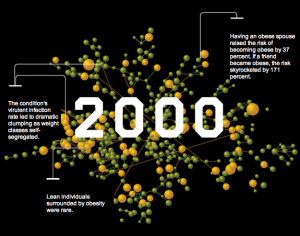Shortest way I can describe how I think journalism must change: the internet is not just for distribution, but production too. I’m not saying that “citizen journalists” will be making all the news. I suspect a complex collaboration between many people, including something like a newsroom full of pro journalists. In this article I’m going to explore what that might look like, by asking what the component tasks are that make up “journalism”, and thinking about who can do those most efficiently. And I’m going to sketch out the design for a piece of social software to support this.
Here’s a list of things that professional journalists do:
- decide what should be more broadly known
- decide what should be more deeply investigated
- collect information from sources both public and private
- check that information for factual accuracy
- construct narratives to make sense of that information
- produce content to convey those narratives
- publish and market that content
This list is by no means definitive or exhaustive. It’s just illustrative, a starting point for a thought experiment. Who could do each of these things best? And what tools to do they need to do it?
Having a network of people producing journalism around a newsroom is not a new idea. Jeff Jarvis has been discussing networked journalism since at least 2006, and naturally I think he’s on to something. In this essay I want concentrate on process and roles. If cheap networks make new types of collaboration possible, they also set the stage for new types of specialization. I think one of the problems of the traditional, mainstream media newsroom is that it it tries to handle the entire journalistic process internally, even the parts that it’s not actually very good at.
An example
On November 25, a video appeared on YouTube which appears to be the testimonial of a young woman recently fired from the credit card collections division of Bank of America. She had been allowing the bank’s most desperate customers to enroll in fixed-payment debt recovery schemes. Many of these customers are currently paying 30% interest as a result of recent rate hikes, so this was a great kindness. It was also against company policy.
The video is powerful. It’s an amazing first-person testimonial of the greed and heartlessness of large corporations.
So is this journalism?
